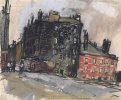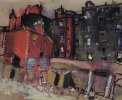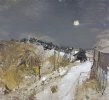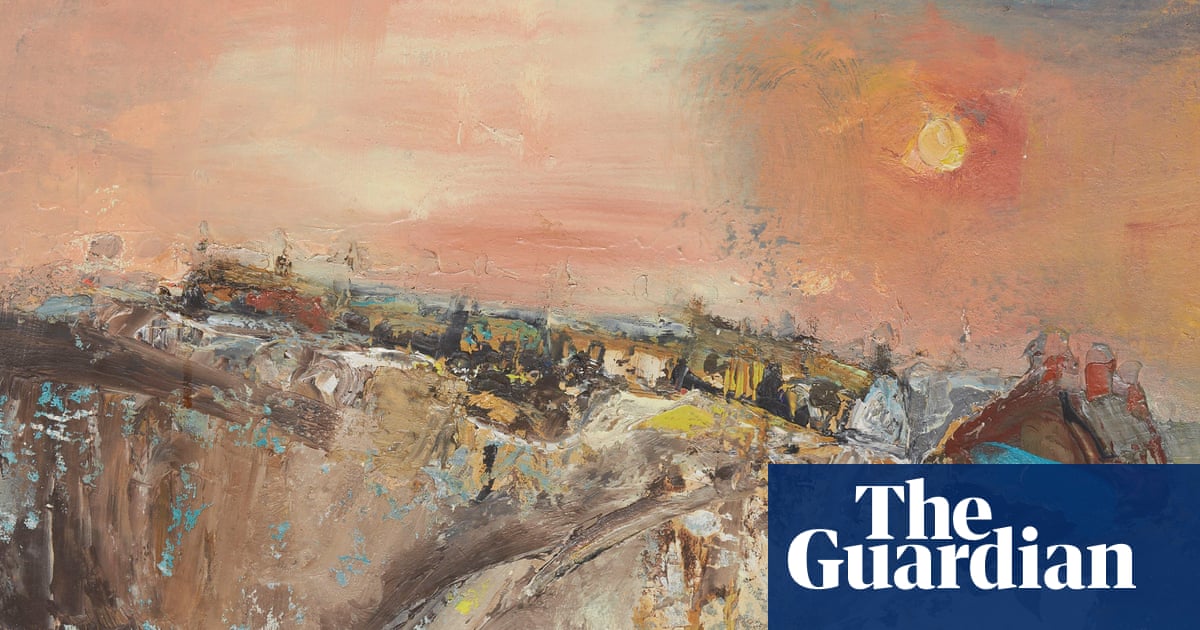-
Sign up or login, and you'll have full access to opportunities of forum.
You are using an out of date browser. It may not display this or other websites correctly.
You should upgrade or use an alternative browser.
You should upgrade or use an alternative browser.
Odds And Ends And Anything You Fancy
- Thread starter Eulalia
- Start date

Loxuru
Graf von Kreuzigung
Only ... two?Who on earth could be so troublesome that they name TWO separate storms after her?

Tropical Storm Barbara - Wikipedia
 en.wikipedia.org
en.wikipedia.org
Good God! Will you look at that lot!
The question over whether she caused the Great Crash of 2013 pales into insignificance...






The one that's heading our way - well, Wragg's way and others down south - has been named Barbara by the Spanish meteorological service.
Previous ones have been given those names by the UK and Irish Met offices. Looking at Wiki, there've been 14 with that name world-wide - this Spanish one will be Barbara XV! I wonder if it's the most commonly used storm-name?
I wonder if it's the most commonly used storm-name?
Previous ones have been given those names by the UK and Irish Met offices. Looking at Wiki, there've been 14 with that name world-wide - this Spanish one will be Barbara XV!
 I wonder if it's the most commonly used storm-name?
I wonder if it's the most commonly used storm-name?I keep telling her to stay at home, but does she listen?The one that's heading our way - well, Wragg's way and others down south - has been named Barbara by the Spanish meteorological service.
Previous ones have been given those names by the UK and Irish Met offices. Looking at Wiki, there've been 14 with that name world-wide - this Spanish one will be Barbara XV!I wonder if it's the most commonly used storm-name?
Who on earth could be so troublesome that they name TWO separate storms after her?
Only ... two?
The question over whether she caused the Great Crash of 2013 pales into insignificance...









I keep telling her to stay at home, but does she listen?
About as well as I pay attention to fine print

old slave
FELIS RESPICIENS
I'm damned if I can identify where/what this was.Also to the North, Leed's Fair (1902)
Am I to believe those are summer clothes?
My best guess is the annual Leeds Horticultural Society show, at which there were exhibits of flowers and produce, and traders selling garden sundries, but nobody's doing anything, and yes, wearing their best summer clothes.
The buildings with the fancy roofs are, I think, temporary structures for the show, and the one substantial building is nondescript. It all seems to take place on grass, so I think the sound-track has no relevance to the pictures, especially horses' hooves.
The swing priced 12/- (12 shillings) translates as ~£75 today.
At the very end, there are "First class cloakrooms" and "Council lavatories". I imagine the latter corresponded to the English derogatory slang term of "bog".
Loxuru
Graf von Kreuzigung
I doubt so too. The phonograph was already invented, but only recorded mechanically, from nearby. For recording background noises, one would have needed electrical amplification techniques, that were only developed twenty years later.I think the sound-track has no relevance to the pictures, especially horses' hooves.
Loxuru
Graf von Kreuzigung
Killing time between two hurricanes?The question over whether she caused the Great Crash of 2013 pales into insignificance...






malins
Stumbling Seeker
Modern art is sometimes hard to understand, she thought.
"Triptych: Women pinned nude to wall"
It's just three blank white squares isn't it?
She sat down and looked hard and long,
whether perhaps there was something there,
a faint outline that would appear ...
and then ... the blank white space ... began to draw her in ... and she understood.

Two to go, then ...
"Triptych: Women pinned nude to wall"
It's just three blank white squares isn't it?
She sat down and looked hard and long,
whether perhaps there was something there,
a faint outline that would appear ...
and then ... the blank white space ... began to draw her in ... and she understood.

Two to go, then ...
That's the Glasgow of my favourite painter, Joan Eardley -We can go a little North, Old Glasgow:


She didn't so often paint buildings as such - her most characteristic images of Glasgow are the bairns


I think her finest picture, the essence of Scottish winter,
over on the east coast at Catterline, where she he had a wee cottage


Joan Eardley: the forgotten artist who captured Scotland's life and soul
Children from the slums, bleak seascapes, village fishermen at work … the vibrant visions of Joan Eardley are finding a new following
Last edited:
Praefectus Praetorio
R.I.P. Brother of the Quill
The Great North Road
In Clerkenwell, lay Hick's Hall, the first purpose-built sessions-house for the Middlesex justices of the peace, built in 1612, on an island site in the middle of St John Street. This building was used as the initial point for mileages on the Great North Road. Its site continued to be used for this purpose even after the building was demolished in 1782.Near the start of The Great North Road at 13 St John Street, lived James Burnett, Lord Monboddo, a Scottish polymath who often hosted the likes of James Boswell, Robert Burns, and Samuel Johnson. He is most famous today as a founder of modern comparative historical linguistics (@Eulalia ).
Coaches began here the long journey North. The original terminus was York, but later extended to Edinburgh.
The first recorded stagecoach operating from London to York was in 1658, taking four days.
In the "Golden Age of Coaching," between 1815 and 1835, coaches could travel from London to York in 20 hours and from London to Edinburgh in 451⁄2 hours
By 1939, the road was an ultra-modern highway, allowing the latest automotive technology to transport passengers at unbelievable speed!
cruxlover
Tribune
Except - as I remember all too well from holidays with my Parents in the 50's - it went through the centre of nearly every town or village on route - not so fast then. Also heavy lorries ( trucks to US members) were limited to 20 mph, which slowed things even more if you got behind one.
We used to leave home in North London at 4 am to miss the worst of the rush hour (on way to Northumberland for example).
From memory the only bypasses then were Hatfield and the North Circular road.
We used to leave home in North London at 4 am to miss the worst of the rush hour (on way to Northumberland for example).
From memory the only bypasses then were Hatfield and the North Circular road.
twonines
LIMERICUS
Indeed, the roads were the relics of an earlier age, when the objective was just to connect the various towns and cities. We are still suffering as a result, the scarcity of land and its subsequent high value, inhibiting the development of a more modern road system.Except - as I remember all too well from holidays with my Parents in the 50's - it went through the centre of nearly every town or village on route - not so fast then. Also heavy lorries ( trucks to US members) were limited to 20 mph, which slowed things even more if you got behind one.
We used to leave home in North London at 4 am to miss the worst of the rush hour (on way to Northumberland for example).
From memory the only bypasses then were Hatfield and the North Circular road.
And now it's a dead boring road plodding on through mostly featureless terrain, mostly dual-carriageway or cut-price motorway, a continuous stream of HGVs, perennial hold-ups with roadworks, dismal services, avoid if you possibly can.The Great North RoadIn Clerkenwell, lay Hick's Hall, the first purpose-built sessions-house for the Middlesex justices of the peace, built in 1612, on an island site in the middle of St John Street. This building was used as the initial point for mileages on the Great North Road. Its site continued to be used for this purpose even after the building was demolished in 1782.
Near the start of The Great North Road at 13 St John Street, lived James Burnett, Lord Monboddo, a Scottish polymath who often hosted the likes of James Boswell, Robert Burns, and Samuel Johnson. He is most famous today as a founder of modern comparative historical linguistics (@Eulalia ).
Coaches began here the long journey North. The original terminus was York, but later extended to Edinburgh.
The first recorded stagecoach operating from London to York was in 1658, taking four days.
In the "Golden Age of Coaching," between 1815 and 1835, coaches could travel from London to York in 20 hours and from London to Edinburgh in 451⁄2 hours
By 1939, the road was an ultra-modern highway, allowing the latest automotive technology to transport passengers at unbelievable speed!
old slave
FELIS RESPICIENS
That cameraman was a selfish bastard, as well, parking on the road so that he can take his film. But back then, nobody really bothered.
Near the start there were 3-lane roads; did any other country in the world build such dangerous things? The middle lane was for overtaking in BOTH directions. Nobody had priority, possession and a big vehicle were all that mattered. Most, but certainly not all, have been removed, sometimes just by allowing one direction to overtake using painted lines.
As far as I'm concerned, the film ends when we were still "down south".
Near the start there were 3-lane roads; did any other country in the world build such dangerous things? The middle lane was for overtaking in BOTH directions. Nobody had priority, possession and a big vehicle were all that mattered. Most, but certainly not all, have been removed, sometimes just by allowing one direction to overtake using painted lines.
As far as I'm concerned, the film ends when we were still "down south".
Loxuru
Graf von Kreuzigung
I recall they were common in the 1960's, in many European countries. Although overtaking was alternating in each direction, such was only regulated by painted lines and arrows. Hence, these roads has a reputation of being unsafe, since there were always drivers who neglected the indicated lines. Most of them have been either widened to 2+ 2 or narrowed.That cameraman was a selfish bastard, as well, parking on the road so that he can take his film. But back then, nobody really bothered.
Near the start there were 3-lane roads; did any other country in the world build such dangerous things? The middle lane was for overtaking in BOTH directions. Nobody had priority, possession and a big vehicle were all that mattered. Most, but certainly not all, have been removed, sometimes just by allowing one direction to overtake using painted lines.
As far as I'm concerned, the film ends when we were still "down south".
We still have a lot of those on hills in Scotland, of which we've got quite a few. The middle lane is nowadays nearly always supposed to be one-way, with a double line that the downhill traffic isn't supposed to cross, but I know some places where there's a broken line that allows them to cross if it's clear, and those are very dangerous. Minor roads, farm entrances etc. opening on them add to the danger. Trunk roads in Scotland aren't for the faint-hearted.Near the start there were 3-lane roads; did any other country in the world build such dangerous things?
Note some lunatic double overtaking at 1:45.
And Stilton - the cheese was never made there, it came from the countryside round about, but it was sold at the Bell Inn (4:50), so travellers associated with that little town. These days I think it all comes from Melton Mowbray in Leicestershire., famous also for pork pies
Last edited:
Indeed, the roads were the relics of an earlier age, when the objective was just to connect the various towns and cities. We are still suffering as a result, the scarcity of land and its subsequent high value, inhibiting the development of a more modern road system.
The British motorway system is pretty comprehensive, but . . .
And now it's a dead boring road plodding on through mostly featureless terrain, mostly dual-carriageway or cut-price motorway, a continuous stream of HGVs, perennial hold-ups with roadworks, dismal services, avoid if you possibly can.
as Eul says it is clogged with traffic and all too often plagued by lengthy stretches of roadworks. An Australian friend of mine said years ago "it will be great when they've finished it", the joke being that there is always work going on somewhere, and a long drive as I had when visiting last year will be delayed more than once.
Note some lunatic double overtaking at 1:45.
It was more, err, free in those days. I wonder what the death toll per vehicle/vehicle mile was then compared to now?
I like the way the filmmaker just stops his car and blocks up a lane whenever he wants to

twonines
LIMERICUS
I believe there is some Stilton actually produced in Derbyshire as well.We still have a lot of those on hills in Scotland, of which we've got quite a few. The middle lane is nowadays nearly always supposed to be one-way, with a double line that the downhill traffic isn't supposed to cross, but I know some places where there's a broken line that allows them to cross if it's clear, and those are very dangerous. Minor roads, farm entrances etc. opening on them add to the danger. Trunk roads in Scotland aren't for the faint-hearted.
Note some lunatic double overtaking at 1:45.
And Stilton - the cheese was never made there, it came from the countryside round about, but it was sold at the Bell Inn (4:50), so travellers associated with that little town. These days I think it all comes from Melton Mowbray in Leicestershire., famous also for pork pies


